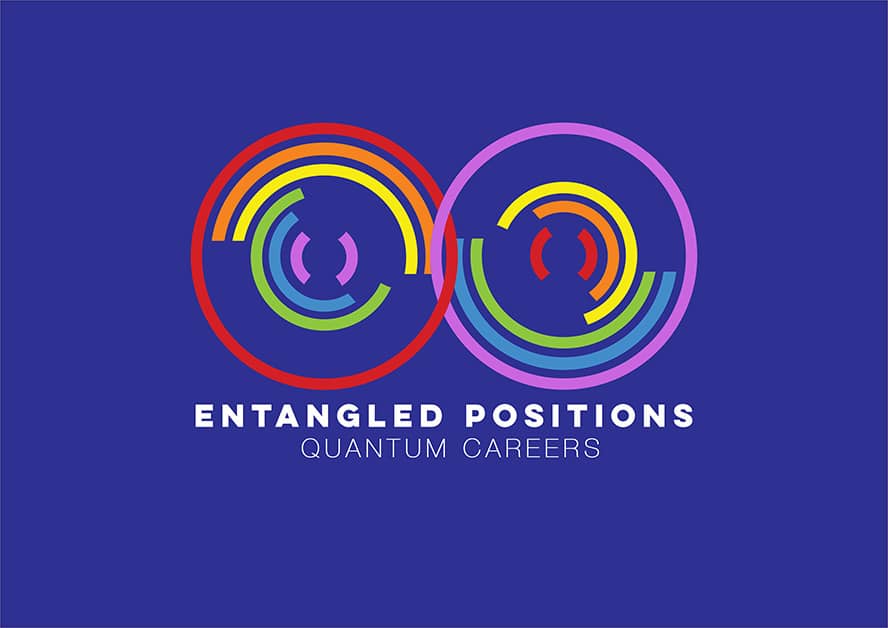The way I ended up in quantum PR is the culmination of many things throughout my educational and professional career. Was I surprised? Yes! Here’s how it all happened.
Continue readingMy Full-Circle Journey with a Nobel Prize Winner
It was written with a typewriter — a fancy (for then) IBM Selectric, but a typewriter, nonetheless.
It was very early in my career; the internet was yet to be born. Most writers were not yet using word processors, the old-school name for what became the ubiquitous personal computer.
I was a science writer at the University of California, Irvine, having moved from covering the city of Irvine as a daily newspaper reporter to covering the UCI scientists as a university PIO. Quite a change.
I was reminded of those days when I recently unpacked a dusty box as part of my quest to declutter my life. I’m not a hoarder, per se, but I do love hanging onto sentimental items. This blog is about one of those items: my entry in the local public relations awards competition. The topic? My press release on an experiment by Frederick Reines, Ph.D., co-detector of the elusive neutrino and future Nobel Prize winner for that work.
People talk about things coming “full circle,” meaning that we often return to what we did in earlier days. Well, I’ve come full circle in the world of quantum physics – but I had forgotten what life was like for me way back when I was a PIO.
In the decades between then and now, our PR agency, HKA, was born and we were crazily eclectic, serving clients in industries from A to Z. We represented a new country (Republic of the Marshall Islands), did PR for a mortuary group throughout Southern California, worked for banks, restaurants, developers, nonprofits, attorneys, you name it. Technology was a key category, too. But physics, much less quantum physics, was nowhere in sight — yet it was lurking around the corner.
Of course, those who know me and HKA are aware we pivoted in 2019 and now focus on quantum technology clients (with a few other deep-tech companies completing our roster). Our niche in quantum appears to have happened out of the blue, but looking back on my career, it makes perfect sense.
Today, our HKA team brilliantly communicates quantum physics as our clients are evolving from research labs toward commercialization. No one knows exactly what will happen, or when it will happen, but there’s no denying that quantum computers are on the cusp of becoming The Next Big Thing (and quite possibly the most transformational tech ever known – and that’s coming from many of the physicists themselves).
Because we work in a vintage house-turned-office, over the years we somehow attracted several rescue cats who provided cat therapy at stressful times. These cats are gone these days – but felines haven’t left us completely. We have discussions about Schrödinger’s cat and one of our clients works with “cat qubits.” Fortunately, neither require feeding or trips to the vet.
Back to full circle… The sentimental item I discovered is proof that in those early years, quantum physics was part of my life. My contest entry began, “This news release, which described a rather exotic physics experiment designed to find out whether or not matter is stable, provided an excellent opportunity for national and international coverage for UCI.”
Yes, some things have changed. My portable laptop has replaced the clunky, one-feature typewriter. No longer at UCI, my HKA hybrid team includes the best of the best, wherever they live. My niche client roster is filled with companies from Europe to Australia to Canada, plus here at home in the U.S.
But some things have not changed. I’m still writing about and pitching exotic physics experiments and helping to secure top-tier national and international coverage for our clients.
Things change, but they kind of stay the same, don’t they?
The Winding PR Path to a New York Times Quantum Startup Story
Securing a major article in The New York Times for a client is every PR professional’s – and client’s – dream. The ‘newspaper of record’ might be headquartered in NYC but its reach and influence spans the globe.
HKA was happy to recently secure a NYT homerun for its quantum client Q-CTRL.
Those unfamiliar with public relations may think a story like this happens overnight. Let me assure you, it does not. While on rare occasions you may be lucky and zoom past the rungs of media hierarchy, this is usually not the case.
This is especially true if you represent startups in a nascent, highly complex industry. For Google and IBM, a top-tier piece on their quantum computing initiatives may be a slam dunk because of their well-established brands. Not so for startups, and especially quantum startups. There’s a reason PR professionals call it earned media coverage.
Every major media hit has its own back story but there are general principles always at work:
- Enlist relevant PR counsel early in your quantum or deep-tech startup history
Many challenges confront quantum startups beyond just being new and unknown. The fact is, this fledgling industry is also largely unknown, or at least not well understood. Closing that awareness gap requires an enormous amount of time, effort and cleverness to educate media and other influencers on why they should care in the first place. When you start this education process early, the time spent will pay dividends later.
Whether in-house or with a qualified agency, your PR counsel will ensure your messages are compelling as well as comprehensible for media, gradually building your company’s narrative and credibility from the ground up.
- A journey of a thousand miles begins with a single step
Adages can be trite but this one is appropriate. In starting a PR program for a quantum startup, the first step is creating compelling media messages that can continually evolve over time according to the company’s growth, industry trends and market changes.
Once the messaging is in place, the storytelling can begin. However, a quantum or other deep-tech startup often will emerge from an academic research lab without a single client, or perhaps a single customer that requests anonymity. An industrious PR person must look for other ways to tell their story and gain that all-important awareness even without validation from a third-party source. That means telling the story by leveraging pre-print scientific papers, creating thought leadership/opinion pieces for media placement or blog posts, offering quotes for breaking news, securing award recognitions, etc. – whatever it takes to get the company into the industry conversation.
- The PR ‘snowball effect’ is real
I’m always amazed how the ‘snowball effect’ of PR works time and again. You obtain early coverage in the industry trades, and then secure a quote in a major technical trade, and then another. When a critical mass takes shape, higher echelon media, including top-tier outlets, start paying attention.
Larger circulation media for broader audiences tend to wait for smaller publications to validate the truth and significance of a quantum startup’s claims. Then, when there is a relevant news story, they have confidence in the company and jump in.
This happened with our media outreach for Q-CTRL in Australia. One influential business publication held back coverage of the company for some time. But after seeing smaller media outlets in the region regularly cover Q-CTRL’s news and feature its CEO, the top-tier business publication recognized their news value and today features the company regularly in its quantum industry coverage.
- Have something to say – then say it often
Coverage from major media outlets like The New York Times obviously takes more than a savvy PR agency. The client must understand the importance of media coverage and be willing to do what it takes to secure enviable earned media placements.
In this case, Q-CTRL founder and CEO Michael J. Biercuk had spent years discussing industry topics that went beyond his own company’s technology and products. His thought leadership has been a key to Q-CTRL securing top-tier attention. This willingness to offer deep background and commentary makes you more valuable to media who are seeking business leaders that take public stands on major issues pertaining to their industry.
- Timing is everything
Years of explaining Q-CTRL’s technology to media and securing coverage from quantum trades to regional business media from Australia to North America built a strong foundation of awareness and credibility. It was a major reason why The New York Times responded immediately to HKA’s pitch tied to current news. Of course, we had pitched the NYT previously, but this time there was a strong US-Australia ‘news hook’ and the Sydney-based editor was ready to dig into a great quantum story.
It just makes sense from their point of view. There was likely no company more well-suited to comment and no one more in the public eye on the issue than Q-CTRL’s CEO. The Times could trust that Mike could speak informatively and understandably on quantum from all the previous coverage that had been achieved.
We believe it was an important story for readers as well as another significant breakthrough for the quantum industry’s visibility in mainstream media.
Kudos, of course, to our client, Q-CTRL, and to the HKA team who made it all happen.
A Full Nobel Circle
Quite a few years ago, before HKA was born, I was a public information officer/science writer at the University of California, Irvine. I was a young writer, fresh from the grind of daily newspapers, and I welcomed the opportunity to explore new territories in depth. I loved that in comparison to writing up to a half dozen news stories in a day, I could “deep dive” into advanced subjects I knew nothing about so I could understand it well enough to communicate the topic to a lay audience.
I was remembering those years fondly this week when I opened UCI’s alumni magazine and saw the article “A Nobel Day” — a remembrance of when two UCI scientists were announced as Nobel Prize winners in 1995. They won in physics and chemistry. It was the first time a public university had received Nobel prizes in two different fields in one year.
Both scientists were part of my “beat” at UCI. I covered physical sciences, biological sciences, engineering and computer science. When I started, I knew little about physics or chemistry but was fortunate to be able to interview, read research papers and then write press releases on the research of both these Nobel Prize winners: Professor Frederick Reines, physics, and Professor F. Sherwood (Sherry) Rowland, chemistry. Both were fascinating individuals and were patient with my limited background in physical sciences. Best yet, they both had such blockbuster research findings that it made my job easy.
Dr. Reines was honored for discovering the neutrino, one of nature’s smallest building blocks that was so difficult to see, many thought it didn’t exist. But it did!
Dr. Rowland, with his postdoc, was the scientist who discovered that fluorocarbons were destroying the Earth’s ozone layer. It was controversial research that at first was challenged by many chemists, but it was proven correct and the fact that aerosol spray cans are almost extinct these days and refrigerants have been radically changed can be attributed to his groundbreaking research.
I wrote their press releases before they became Nobel Prize winners, but we all knew they were destined for international glory. It was only a matter of time.
That training was terrific background for my current position, leading HKA, a PR agency truly entangled in deep tech, especially quantum technology. And recent events have proven that my days of interacting with a Nobel Prize winner are not over just yet. Our agency found itself working with one of this year’s Nobel Prize winners in physics, Dr. Alain Aspect, a co-founder of the quantum tech company Pasqal, one of our clients. Dr. Aspect’s work is described here.
Yes, I feel honored once again.
Getting to the Heart of Quantum
Before our PR agency threw itself headfirst into the world of quantum tech, we were an eclectic outfit. One favorite sector was nonprofit, with many HKA clients doing charitable work. As part of that world, I became accustomed to hearing, and communicating, “warm and fuzzy, feel-good stories.”
Some involved disadvantaged people getting a helping hand.
Other tales told of abandoned animals getting a second chance.
Often, we helped disease-related associations raise funds for research and patient care.
Yep, those heartwarming stories were commonplace in the HKA world for many years.
So, when we began our almost-total focus on quantum back in 2019, I thought I had left those sorts of stories behind. We had left the soft and squishy nonprofit world, replaced by cutting-edge quantum tech stories that could eventually change the world. We were dealing only in facts, not feelings.
I was wrong.
A couple days ago, I witnessed a heartwarming story involving the global quantum ecosystem, which has become part of my daily virtual work life. While not an everyday occurrence, this story demonstrates the beating heart in the quantum world.
Denise Ruffner is known to many, not only for her work at several distinguished quantum companies, but as founder and president of Women in Quantum (WIQ). Her WIQ work is pro bono, somehow fit in between her work as Chief Business officer of Atom Computing. Her WIQ work is a great fit for her regular job, as her “quantum friends” universe is vast and continually growing – not only women in quantum, but scores of men who actively support bringing more women into the industry.
In the old days, we’d remark on Denise’s amazing Rolodex (Gen Z and Millennials may need to Google this archaic term). Today, Denise is considered an influencer. Few people in quantum circles do not know, or at least know of, Denise, and apparently, when Denise sounds the alarm, people come running.
Sunday night, Denise reached out to 34 people via email. All are involved in some aspect of quantum – founders/CEOs, research physicists in the lab, business development folks. Here’s the story:
Denise was approached to try to help raise $5,000 to fund a summer scholarship for a third-year female student at Louisiana State University. The student has been actively engaged in quantum tech as an undergrad, describing herself: “ I have a keen passion for quantum computation and information. Specifically, I’m interested in understanding and designing hardware-aware algorithms that will be optimized for applications in the near term.”
The $5,000 would enable her to travel to University of Oxford this summer to collaborate fulltime with a doctoral student who has been mentoring her. The funds would cover travel and living expenses while doing this work in the lab.
Well, Denise asked for $5,000 altogether – suggesting that several individuals, or their companies, donate $1,000 each. Supporting this student would not only help bring women into the industry –a goal of Women in Quantum – but also add diversity, as the student is African American.
So, what happened? I watched as person after person emailed back “yes, we will donate $1,000!” In all, the offers exceeded Denise’s ask. All the donors are to be commended for their generosity!
Who said there are no warm and fuzzy stories in quantum?
The Quantum State of Things
There is no shortage of quantum-focused conferences these days, although many are called a summit, a term that somehow sounds more inviting than a conference. Whatever it is called, an increasingly number of people are opining about the current state of quantum technology as well as what lies ahead.
Some talks are packed with unfortunate rah-rah hype. Others contain so many technical details that only a quantum physicist could understand. But some speakers hit just the right note for me – blending realism and understandable expertise.
One such speaker is Doug Finke, who spoke at the Chicago Quantum Summit in early November. While Doug spoke in person in Chicago, I watched virtually in Southern California, actually very near Doug’s home base. In full transparency, Doug is the person who got HKA hooked on exploring the potential of PR in the quantum technology world.
Doug is the founder and editor of the online Quantum Computing Report and is one of the first, if not the first, to create a non-academic publication focused on quantum. That was in 2015, and he later added a weekly newsletter. Calling himself a “refugee from the classical computing world,” (read IBM, Intel, Western Digital, among others), Doug saw the quantum writing on the wall. He observed that the emerging quantum field lacked analysis and packed his bags to move from classical to quantum computing – and hasn’t looked back. In fact, he was the first reviewer of the IBM Quantum Experience in 2016.
Speaking to the Chicago audience, Doug presented an enthusiastic yet realistic image of the current state of quantum tech, and a significantly rosier picture of the future. He cited Amara’s Law, which states that people tend to overestimate the effect of technology in the short run but underestimate it in the long run.
He noted that right now, he can count at least 225 startups in the field of quantum technology. But he quickly added that in 10 years, most won’t exist in their present state. They will either be bought, merged or go out of business. A great consolidation will take place, similar to what happened in the 1960s and 1970s with the semiconductor industry, as well as with personal computers in the 1980s and 1990s. And just like the tech crowd debated which semiconductor technology would win out, so, too, are people today taking bets on which quantum tech will remain standing. Doug doubts it will be just one.
Competition is fierce and coming from many directions. It’s fiercely competitive among the hardware and software quantum startups. And competition is seen at the international level, with countries vying to outspend each other to get ahead. Doug told the U.S. audience that Europe and China are both significantly outspending the U.S. He added that even advances in classical computers at this stage represent competition – “classical computers keep getting better and better.”
Interestingly, Doug pointed to the coming of quantum-resistant cryptography as a parallel to the frenzy that occurred with Y2K, at the turn of the century 20 years ago. With the resulting revenue classified as “huge,” Doug noted that tens of billions of devices will need upgrades or replacements to avoid disaster. It’s a matter of QKD (physics based) versus PQC (math based). By the end of the decade, there could be three to five billion in revenue addressing this issue alone with quantum computers, Doug suggested.
OK, this is a pretty darn rosy picture. But Doug does point out a few things that could derail the growth. He’s not concerned about the current lack of powerful-enough hardware to carry this forward, since the hardware companies have convincing roadmaps. He IS concerned there’s not enough easy-to-use software. And the biggest red flag, according to Doug and many others, is the labor shortage. Too few people are trained to work in the quantum industry. Workforce development is critical for truly meaningful growth.
Doug wrapped up his talk with sage advice:
First, manage expectations. This is a decades-long process, it won’t happen overnight. Be patient and be confident the industry will thrive.
Next, think carefully about how you should participate in the industry:
- Providers: think about where you best fit in the ecosystem to realistically provide differentiated value.
- Investors: perform due diligence carefully; not everyone will succeed in this difficult industry.
- End users: start investigating how quantum technology can have a positive impact on your organization, even with just a proof of concept right now, and get your staff trained.
- Educators: continue helping industry by building a quantum-ready workforce with relevant skills.
- Governments: support basic research and educational programs but also think about how you can be a consumer of large-scale quantum technology.
Doug suggested governments treat the emerging quantum industry like it treated the space race in the 1960s. “Governments can issue purchase orders to companies, much like the space program helped the semiconductor industry. Purchase orders are much stronger than grants, I challenge you,” Doug concluded.
TOWER OF BABEL?
As an American, I’m guilty of being primarily a one-language person. Sure, I can understand and speak a bit of Spanish and Italian, due to long-ago high school and college courses. And living in southern California regularly brings opportunities to speak snippets of Spanish. But if I really want to understand, or be understood, it’s English.
Fortunately, many countries are lightyears ahead of the U.S as far as learning non-native languages. Many people speak two, three and even more languages – and English is almost universally taught.
I’m struck by this linguistic aptitude again and again as I work in the quantum tech field. While it’s not unusual for technology companies to interact, especially at international conferences (remember those?), there seems to be something special about the quantum tech ecosystems now being formed and embraced. While previous technology advances tended to be defined by a single large company, or perhaps a geographic area like Silicon Valley, today’s quantum tech ecosystems are global in every aspect, and this is being accepted as the norm.
For example, quantum tech startups not only are taking shape around the globe, but most have a truly cosmopolitan workforce filled with brilliant scientists and engineers who have relocated following university stints to find exciting career opportunities in this flourishing field. Native tongues are far-flung — from Europe, the Middle East, South America, Africa and Asia — yet communication and collaboration come readily in English.
It’s not only the startups with this distinctively international flavor. Nonprofits, supported by industry players, proactively advance quantum tech ecosystems around the world; there is no central “hub” of quantum tech. These organizations bring greater awareness about both the potential and the realities of quantum technology, are fostering quantum education to support the growing labor needs in this nascent industry and provide forums that encourage collaboration. Yes, there is intense competition in this field, but I have also seen a lively collaborative spirit that easily jumps across geographical borders.
One such group, aptly named OneQuantum, is headquartered in the U.S. but its flavor is decidedly international. Not even two years old, it has created chapters around the world: Nepal, South Africa, Balkan, Nordic, Canada, Zimbabwe, Kenya, UAE, India, Libya, UK, Japan, Chile and Argentina. By the time you read this, I suspect there may be more. Each chapter, which has a local leader, holds local events for chapter members, but virtual summits also attract online participants from around the world. Last week, for example, I tuned into the South Africa chapter summit and virtually met not only some from the South African quantum community, but others, like me, who live in other regions but are eager to grasp this industry from an international perspective.
One other OneQuantum chapter – Women in Quantum — is not tied to specific geography and so far, has held five virtual summits that have drawn enthusiastic attention from all corners. Virtual career fairs tacked onto these summits have made them even more popular – with both employers and employees.
This global perspective has served the fledgling quantum industry well. It’s likely that we will see more, not fewer, nationalities, languages and cultures accessing the multiple quantum ecosystems. And given the more limiting perspectives of past technology advances, this is truly refreshing.
A Down-to-Earth Quantum Discussion for Businesspeople
As the owner of a PR agency with an enviable roster of quality quantum technology clients, I am reading a lot of articles and watching webinars I find somewhere between slightly perplexing and totally confusing. I am not a scientist nor an engineer, but I’ve written materials for both through the years, That said, at times I find myself grappling with quantum terms that truly boggle my mind. I don’t think I’m alone among us quantum “laypeople.” Fortunately, at HKA we have a team of savvy, scientifically minded PR folks who understand the esoteric quantum terms and take great pride in translating our clients’ work into prose that helps the media tell these complex technology stories.
I’m telling you this because I was absolutely overjoyed to view a Zoom webinar last week that was on the topic of quantum technology yet focused on the looming real-world business applications. Now they were talking my language! Yes, the series is cleverly titled Entangled Discussions using one of the esoteric terms I was referring to, but the moderator, John Barnes, and the panelists from Quantum London, addressed how the insurance industry will benefit when quantum computers come of age.
Panelists Emanuele Colonnella and Anahita Zardoshti were articulate and fascinating to me. I had to laugh when Emanuele, the founder, revealed the idea for their company was hatched in a London pub in 2019. My company, too, had its origins on a cocktail napkin with a colleague several decades ago, so I immediately felt a kinship.
Quantum London’s tagline is “The business impact of quantum computing.” Refreshing to see! It is an organization with more than 3,600 followers/members, plus 400+ in two Meetup groups. With online events, Quantum London attracts participants way beyond London’s confines. The LinkedIn profile tells the tale: “Quantum is coming. How soon do non-techies need to care? We say right now!”
Many of us know that quantum computing is destined to enable society to address hugely challenging issues, ranging from climate change to cancer research. There certainly are skeptics and the jury is out as far as when this will occur. In the meantime, this was a real-world conversation, with these folks in the insurance industry predicting more immediate benefits.
Zardoshti, a young woman with a deep physics background now working in insurance, was articulate and easy to understand. She looks forward to the day when quantum computing can enhance risk simulation for events such as major weather catastrophes.
“Data is key in this industry, the more the better. But the more information you have, the harder it is to process,” she said. “We’re looking forward to having quantum computers help in this regard with machine learning algorithms.” She added that detecting patterns of insurance fraud in healthcare is another potentially valuable task for quantum computers.
An audience member asked whether the arrival of quantum computing would reduce the workforce. Moderator John Barnes, whose Entangled Positions company recruits specifically for quantum tech jobs, scoffed at that notion. “Yes, machine learning will replace the work of some people, but it’s fascinating how technology works hand-in-hand with human counterparts.” He said there will be a need for more retraining, especially for new jobs that don’t now exist.
“This is an old problem that happens with every new technology,” Colonnella said. “New jobs will be created in the quantum space and really, it’s an exciting space in which to play . . . When you have a lot of data and a lot of complexity, that’s where quantum computing can make a real difference.”
Barnes added, “The quantum revolution will touch on every aspect of business and every role.”
Perhaps that’s why Barnes is hosting this monthly series Entangled Discussions.
My takeaway as a longtime business owner? Whether you understand the science behind it or not, businesses everywhere need to understand how the quantum revolution will impact their sector and see where its benefits will apply.
Experts Agree: The Time is NOW for Quantum Ethics Discussion
Experts agree that the time to explore ethical issues as they relate to quantum technologies is now, not tomorrow.
With initial commercial applications likely coming to market in the next 3 to 5 years, and powerful fault-tolerant systems possible within the next 10 years, they believe ethical situations should be analyzed and discussed today so society can avoid undesirable outcomes as has occurred before with new technologies.
Key issues include ensuring the human benefits of quantum computing are available across nations, ensuring the wealth created is distributed equally as well, and to circumvent the potential misuse of quantum by totalitarian nations.
We are glad to see these issues being raised and were privileged to be part of promoting a recent documentary on the topic by The Quantum Daily (TQD). Take a look at “Quantum Ethics/A Call to Action by The Quantum Daily” and let us know your thoughts, too.
15-Year-Old Anisha and Her Journey to the Quantum Wonderland
Anisha Musti is unlike any other teenager I have ever met. And as we move into 2021, as our world faces a multitude of thorny issues, it is reassuring to recognize that the younger generation may, ultimately, come to the rescue. If you, too, welcome this reassurance, read on.We met Anisha, a 15-year-old teen from New York, while working with our clients in quantum computing. Without a doubt, Anisha is the smartest 15-year-old I have met. But I would hardly call her a geek: she is articulate, personable and attractive. So-called “experts” told her she really couldn’t begin studying quantum computing until she was in graduate school, and certainly a Ph.D. in physics or math would be her calling card to enter the field.
To her credit, Anisha scoffed at this advice. She had watched a YouTube video on quantum computing when she was 14 and suddenly discovered a thirst for learning what this strange new field was all about. She admits that she felt like she was “falling down the quantum rabbit hole.” The more she learned, the more she wanted to know.
In Anisha’s words, “Quantum really piqued my interest. It sounded like something out of a Marvel movie and seemed like it had the potential to change the world.” Not surprising, given her uber-mature view, Anisha learned to code a quantum algorithm to detect Parkinson’s disease and published articles on the subject. At age 14.
So, what is she doing at age 15? During a Zoom interview, Anisha explained she felt compelled to do something about the lack of resources for high school students who wished to learn about quantum. She didn’t want to wait until grad school. Heck, she didn’t want to wait until college.
During a talk Anisha gave to the virtual Women in Quantum summit in December, Anisha explained, “When we look at the issues that people are attempting to tackle in the quantum field, we see things like qubit control, qubit quality and decoherence. But no one is focusing on the people.”
“We call it the people problem. If we don’t get the next generation’s smartest minds to work on these issues, we won’t be able to truly make progress in quantum computing. Introducing the subject to people halfway through their undergraduate programs is, in many cases, too late. They already have their lives and careers planned out and many won’t be compelled to, all of a sudden, attend grad school for quantum,” Anisha told the audience comprised mostly of women, and men, who were either already quantum researchers or graduate students.
Anisha’s analysis is spot on, as the companies we work with while doing PR in this space all say the same thing: “Recruiting qualified quantum scientists is one of our biggest challenges.”
Anisha is not one to just raise an issue and hope someone else solves it. She founded an organization called Q-munity. Asked to explain it, she says simply, “It allows other students, like me, to learn quantum computing and connect with students around the world trying to do the same.”
After beginning in November 2019, despite the worldwide pandemic, Anisha has achieved:
- Several thousand members from 26+ countries
- A quantum summer camp for 50+ high school students
- More than a dozen workshops, with tutorials and original content posted on the Q-munity website
As Anisha spoke at the Women in Quantum Summit, the chat box lit up with praise and encouragement for the teen. Everyone was amazed at not only Anisha’s own abilities but were astounded at what she has accomplished thus far – and what lie ahead for her and her young colleagues.Anisha commented, “All of us could make a huge impact by writing and creating quantum solutions to world problems. For myself, I aspire to continue to make meaningful impact using quantum technology, but I believe one of my biggest contributions would be enabling others to do the same as me, it is the multiplier effect. My impact is even bigger when I help give someone else tools to make their own impact.”
People ask Anisha what’s next. Don’t be surprised by her answer:
“I want to impact billions, change the world. It might sound like a 15-year-old’s naïve dream but that’s okay. I want to solve world problems using cutting-edge technology and at the same time, enable others to do the same. I’m super excited to build the future.”
Want to know more about Anisha’s amazing efforts? Log onto her website, Anisha or the Q-munity website , and perhaps take a look at the conference she’s setting up on February 6-7, 2021.










